Crane stork's bill, Iranian stork's bill,
Hebrew: מקור-חסידה גדול, Arabic: إبرة الراعي
| Scientific name: | Erodium gruinum (L.) L'Hér. | |
| Synonym name: | Erodium uniflorum (L.) Pacho | |
| Common name: | Long-beaked stork's-bill, crane stork's bill, Iranian stork's bill | |
| Hebrew name: | מקור-חסידה גדול | |
| Arabic name: | إبرة الراعي | |
| Plant Family: | Geraniaceae, גרניים |
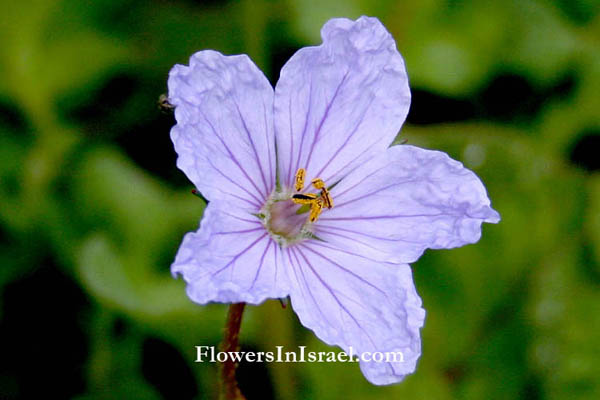
|
| Life form: | Therophyte, annual | Stems: | 10-70 cm high |
| Leaves: | Alternate, compound, pinnate, dentate or serrate; hairy | |
| Inflorescence: | 2-6 flowers in umbels from 8-10 cm | |
| Flowers: | Corolla 5 free petals, blue, violet; ovary superior; bracts whitish | |
| Fruits / pods: | Capsules, hairy, with narrow beak, 6-11 cm long | |
| Flowering Period: | February, March, April, May | |
| Habitat: | Batha, Phrygana | |
| Distribution: | Mediterranean Woodlands and Shrublands, Semi-steppe shrublands, Shrub-steppes, Deserts and extreme deserts | |
| Chorotype: | Mediterranean | |
| Summer shedding: | Ephemeral |
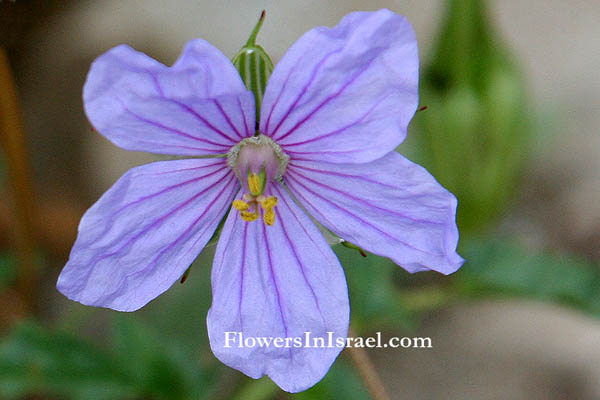
Derivation of the botanical name: Erodium, Greek: erodiós or ερωδιός, a heron; the carpels of these plants resemble the head and beak of a heron. gruinum, grus, crane; inus, belonging to or resembling; crane like. uniflorum, one flowered. The Hebrew word: מקור-חסידה, makor chasida / stork beak, is a mistake in the translation (chasida means stork). In Greek, the stork is called Πελασγός pelargos, pelargonium.
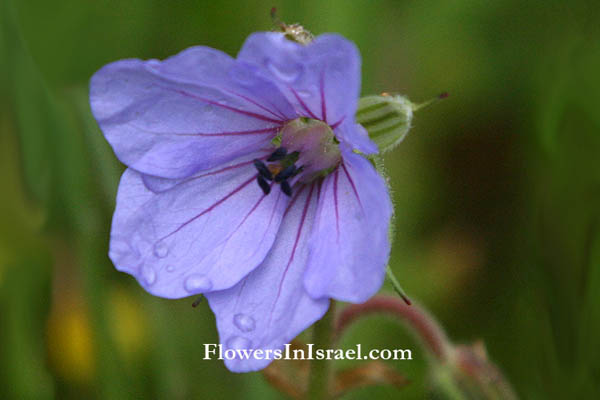
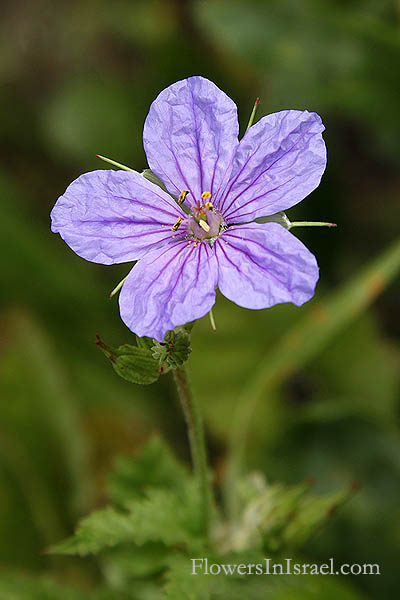
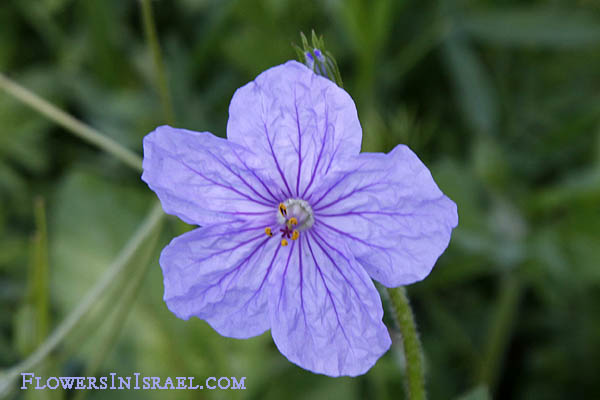
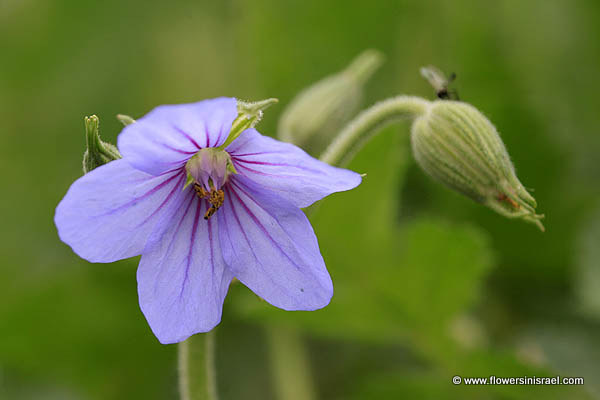
|